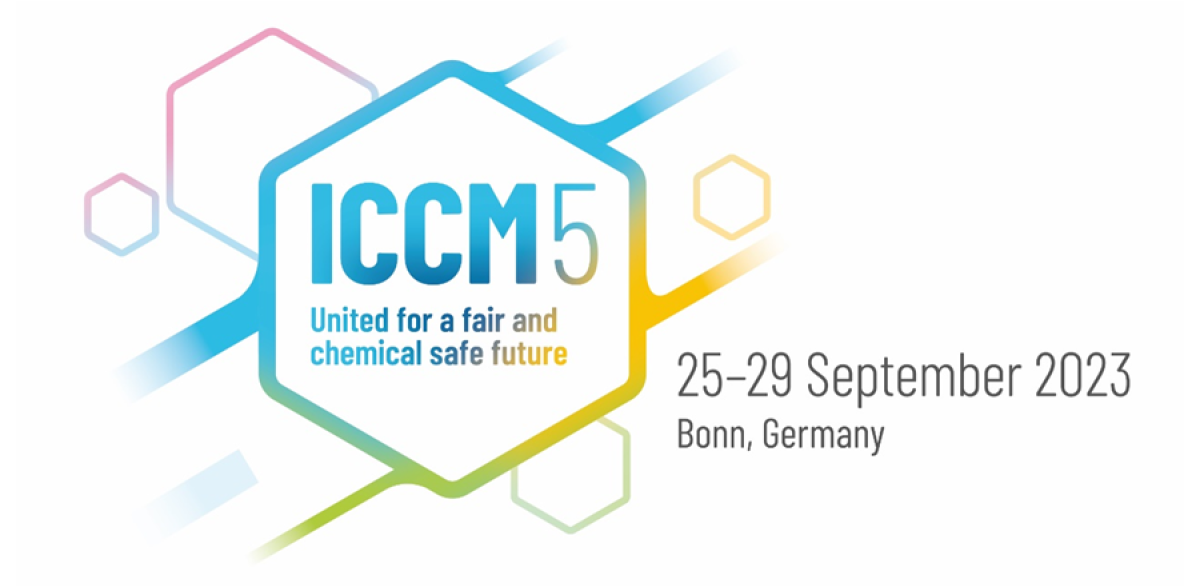The debate about saving the planet is often mainly focused on the urgency to cut greenhouse gas emissions. The two other emergencies of the triple planetary crisis - biodiversity loss and pollution - get far less public and media attention. Yet they are equally urgent and must be solved together. All three crises are also a consequence of our widespread and sometimes improper use of chemicals.
To address the issue of sound chemicals management, the United Nations Environment Programme (UNEP) launched in 2006 a policy framework, the so-called Strategic Approach to International Chemicals Management (SAICM). As this framework did not prove strong enough to tackle pollution, a process was set up in 2015 to overhaul and complement SAICM. Eight years of preparatory work will culminate in decisions at the Fifth World Chemicals Conference (ICCM5) 25-29 September 2023 in Bonn. It is expected that representatives of governments, industry, non-governmental organizations, and academics from more than 100 countries will adopt a new stronger framework.
What’s the problem?
Chemicals have become essential to our lives. They are used in almost everything: from pharmaceuticals, farming, pest control, detergents, disinfectants and toiletries to building materials, vehicles, electrical and electronic devices, textiles, and packaging of all sorts and shapes.
Our all-encompassing reliance on chemicals has created a global problem:
- The worldwide production has increased 50-fold since 1950 and is projected to triple again by 2050 compared to 2010. This makes the chemical industry the second-largest manufacturing industry globally and the third-largest industrial emitter of carbon dioxide. Chemicals are thus not just polluting our environment, they are also driving global warming and resource depletion.
- Innovations - either targeted or accidental - have generated an abundance of chemical substances. About 350,000 chemical substances and mixtures of chemicals are estimated to be available on the global market; thousands of new chemicals are added every year. In addition to the number, the complexity of their applications and the areas of use are increasing worldwide. Often it is also not known in which products and technical processes which substances are used, and how these substances interact (separately and together) with humans and the environment.
- Recent scientific findings suggest that the mass of man-made materials (such as concrete, asphalt, metal, plastic, glass, paper) will soon exceed or has already exceeded the total living biomass of our planet. That means, the human species is profoundly interfering with the planetary system without being able to assess, let alone effectively control, the growing amount and number of chemicals in the environment. This is consistent with the conclusion of some scientists that humanity has exceeded the safe planetary boundary for chemical pollution.
What are the consequences?
Accelerated chemical production and use are causing serious pollution impacts along the life cycle of chemicals worldwide, including huge waste problems. Soil, air and water are contaminated with vast amounts of man-made chemicals some of which are long lasting. For example, per- and polyfluoroalkyl substances (PFAS) - known as “forever chemicals” - pose a tough challenge because they do not break down. They linger around in the environment, contaminate our water, soil, air, and end up in the bodies of humans and animals. Their non-stick and waterproof properties have made them popular in the production of clothing, kitchen utensils, fresh food packaging and cosmetics. The European Commission is considering a ban of PFAS, a process jointly initiated by Germany and other EU member states. In the United States, the Environmental Protection Agency last year proposed a national regulation on legally enforceable levels for six PFAS in drinking water.
Those are important steps. But we are still far from the regulatory measures needed to safeguard human health and the environment. At the same time, the use of chemicals must focus much more systematically on innovative and future-proof solutions for sustainable development, i.e. chemicals’ use in the sense of green and sustainable chemistry.
Urgent action is needed at the global level - “business as usual” is not an option.
What to expect in Bonn?
ICCM5 aims for a strengthened global framework to manage chemicals and waste in such a way that negative effects on human health and the environment are minimised. Since its launch, SAICM is widely recognized for its comprehensive scope and unique multi-stakeholder multi-sectoral character. However, an independent evaluation and UNEP’s Global Chemicals Outlook II have shown that the objectives have not yet been achieved.
Although the Sound Management of Chemicals and Waste (SMCW) is key for sustainable development, the process is far from getting the public and policy attention it needs – unlike that launched by the United Nations Framework Convention on Climate Change (UNFCCC) to combat climate change. In 2015 it resulted in the Paris Agreement, the international legally binding treaty with the goal of climate protection.
The expectations on the ICCM5 can be described - very simplified from the perspective of the Federal Environment Agency - as follows:
- to define goals more clearly
- to make success measurable
- create more commitment among the participating states
- to provide developing countries in particular with the institutional, technical and financial capacity to achieve greater safety and sustainability in the handling of chemicals and waste
Progress on those fronts is a prerequisite for developing concrete measures after the conference, and for monitoring their implementation. Tackling the global chemical crisis will at the same time help reaching all Sustainable Development Goals (SDGs).
The ICCM5 is an opportunity to raise the profile of chemicals issues and put them higher on the political agenda. The future of a sustainable and safe use of chemicals rests on the outcome of Bonn!
 Click to enlarge
Click to enlarge


